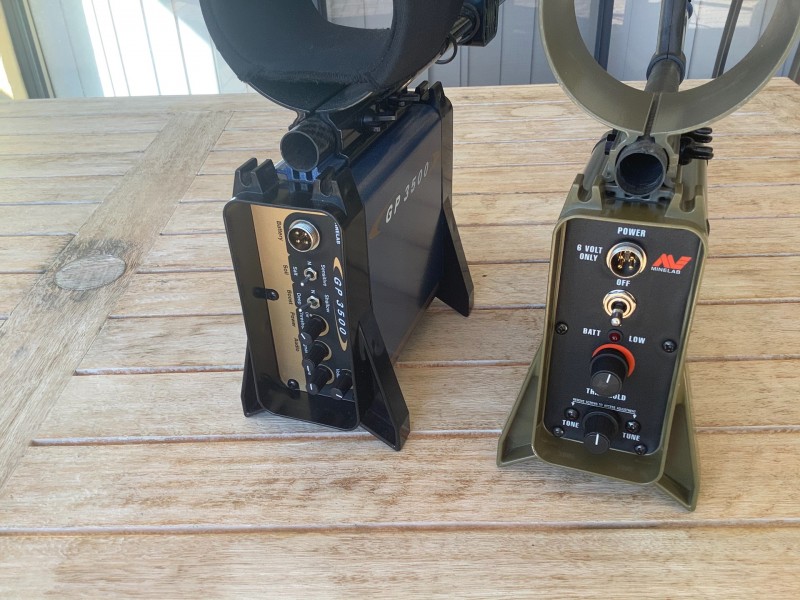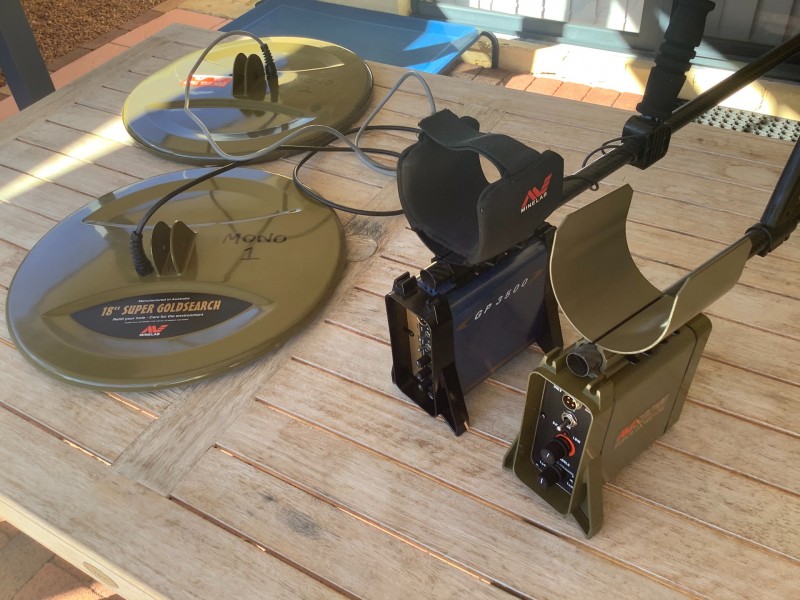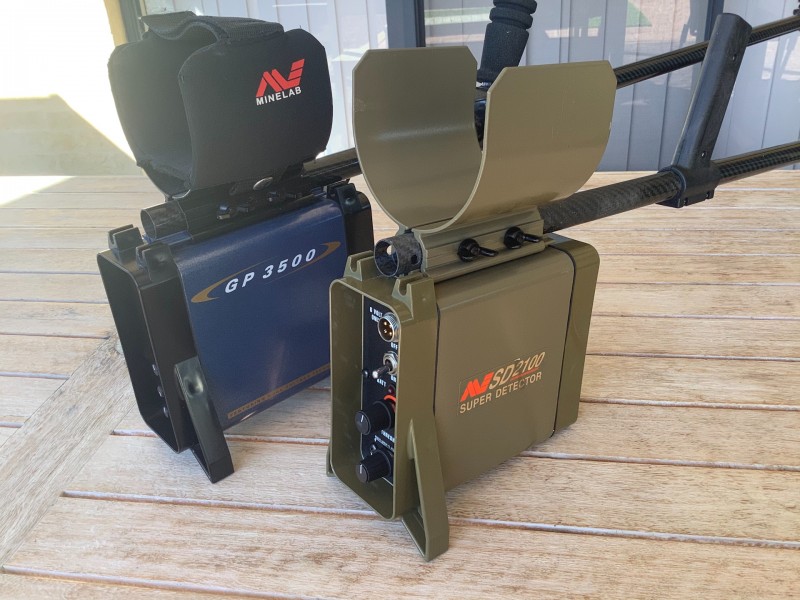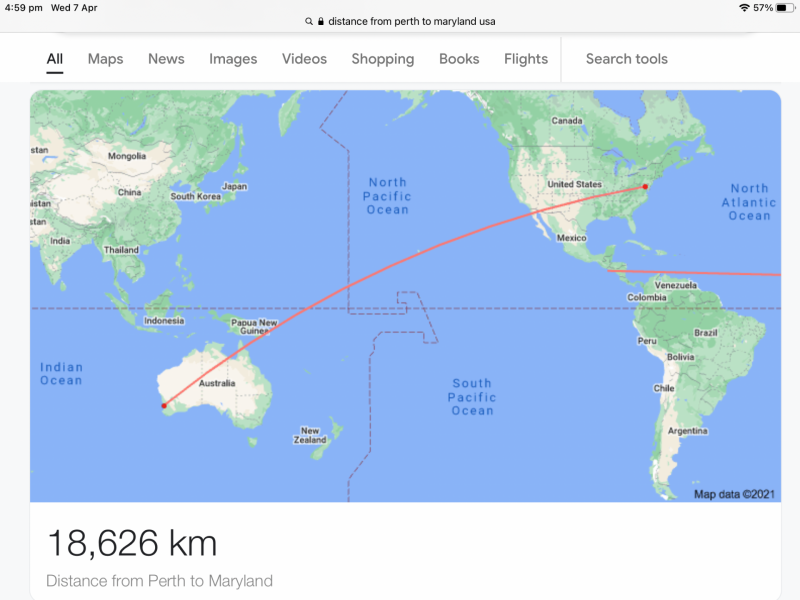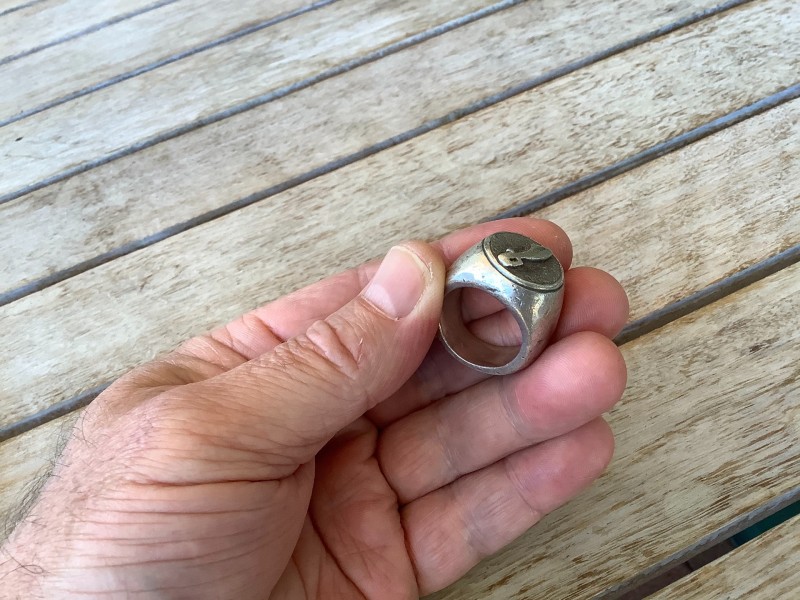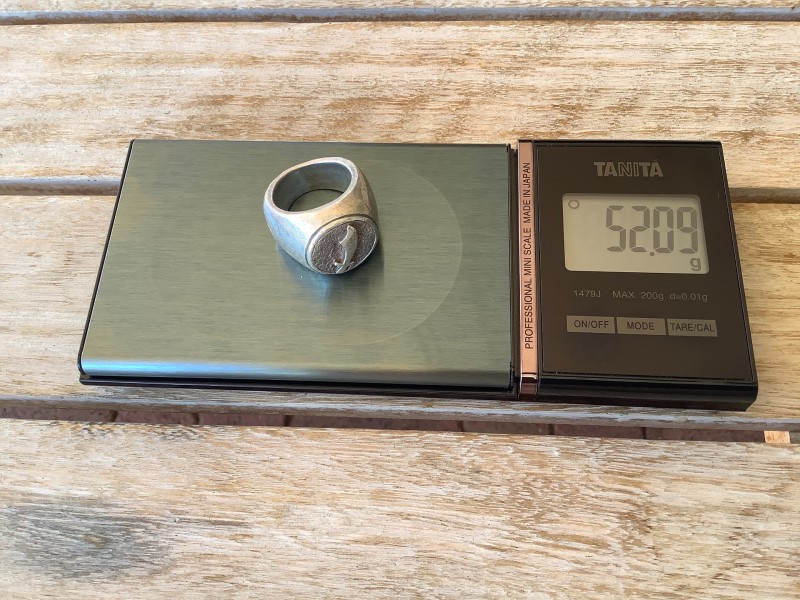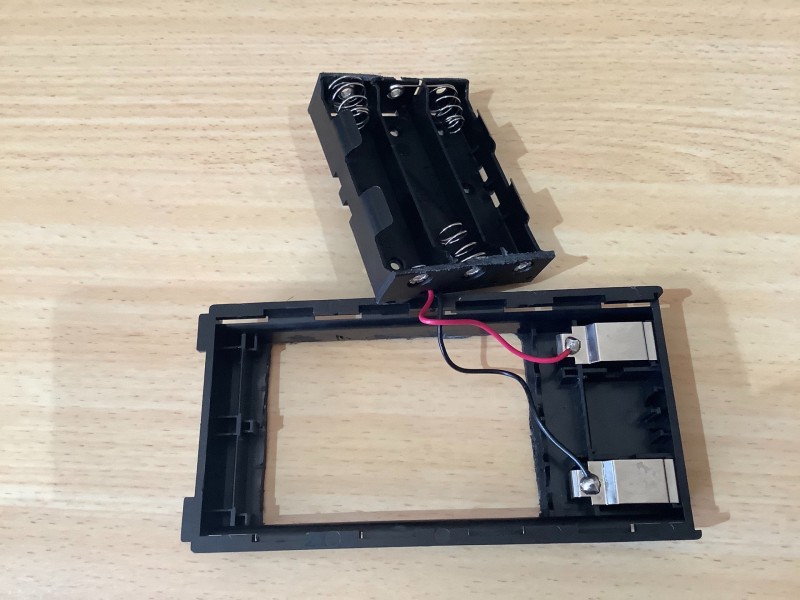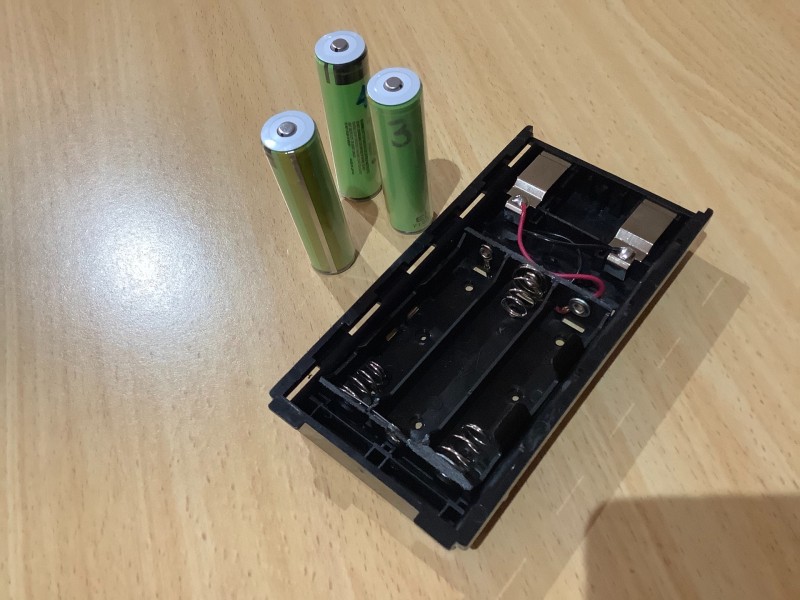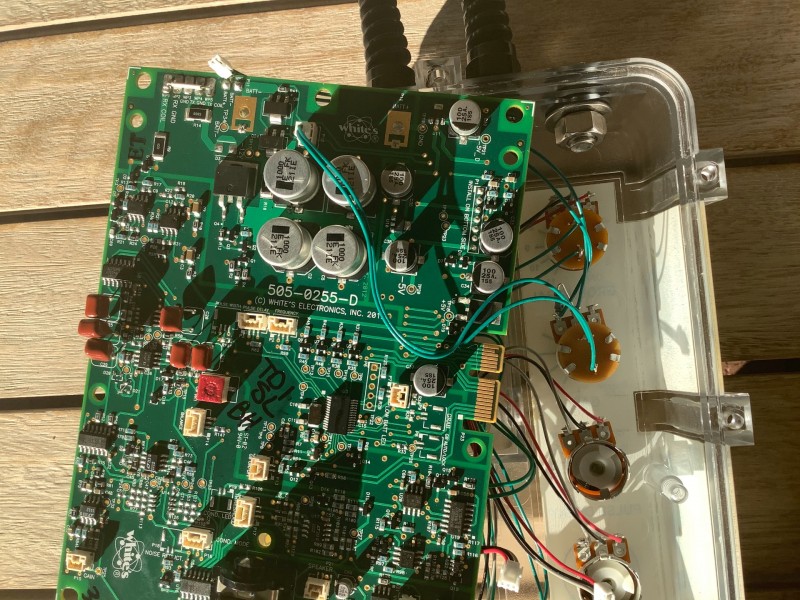-
Posts
969 -
Joined
-
Last visited
Content Type
Forums
Detector Prospector Home
Detector Database
Downloads
Everything posted by Tony
-
With all this talk about the GPX 6000, I’m staying with my retro detectors. I’ve found teeny ones at depth and bigger ones that took an hour to dig out. Picked up these machines from a retired detecting couple who had them as backups.....they were “new in box”. Totally unmodified except for the external tune pot on the 2100 and regulated power supply. Hooked up to the legendary light weight 18” mono Kevlar coils makes a formidable nugget hunter......no bungee required. Two detectors and six coils for 1/4 the price of the 6000. Then again, my 70 Series Landcruiser has a manual gearbox and you have to wind the windows down by hand 👍 ......
-
Limited Going International?
Tony replied to Steve Herschbach's topic in First Texas - Bounty Hunter, Fisher & Teknetics
Ivanll is legitimate.....have conversed with him a few times. If anyone can get such a machine to Australia then it’s him. He lives in North Queensland, Australia. PS......I don’t have one and most likely won’t. Tony -
I have chopped off about 12” of my TDIBH cable.......no problems at all.
- 10 replies
-
- advice and tips
- coils
-
(and 1 more)
Tagged with:
-
Tdi Pro 18v + Battery Pack. 5 X 18650 With Dedicated Charger
Tony replied to karelian's topic in White's Metal Detectors
Not mine Joe.....must have been another setup somewhere. -
Tdi Pro 18v + Battery Pack. 5 X 18650 With Dedicated Charger
Tony replied to karelian's topic in White's Metal Detectors
Or you could get really serious and just get a very long extension cable and plug into the 240v.....😗 -
Tdi Pro 18v + Battery Pack. 5 X 18650 With Dedicated Charger
Tony replied to karelian's topic in White's Metal Detectors
And here’s me going back to a stock battery......well not quite....it’s a 3 x 18650 setup @ 11.1v. In another thread, I mentioned the super hotspot on my TDIBH board when running the 14.4v battery which got me worried. Being sealed up, there's probably less opportunity for the heat to dissipate. Even when opened, the hotspot was severe.....couldn’t touch it for more than a second or so without burning a finger. My depth results were a maximum increase of 2” over the stock battery. In fact, my current 11.1v Lithium setup sits in the middle (depth wise) between the stock battery and my retired 14.4v battery so I’m more than okay with just the 1” drop. Regards, Tony -
Whites Beachhunter Id Have Something Remarkable?
Tony replied to Rhino's topic in White's Metal Detectors
I had one years ago and liked it a lot. Best used on the beach, wet and dry as opposed to the surf. Performance and audio was very good. Indicator lights are a guide only. If it’s a red light only then you are dealing with pure iron targets. Iron alloy targets such as bottle caps will be a yellow light which is also most of your gold rings. Green light is high conductors such as silver rings and some coins. Basically, if it’s anything except a pure red light then you dig ! There is a spring loaded toggle switch that alternates between AM and DISC.....sometimes it doesn’t stay put in the DISC position and flicks back to AM.......only a minor problem. Mine was a very reliable unit......it’s a twin frequency machine which is a good thing. Don’t worry about the Ground Balance knob......kind of redundant in most conditions. -
Hello Clive......well thank you for the compliment and maybe your post is a “lightbulb” moment for me. If Fisher needs an AQ user down under then hopefully they will read this thread. I do use the Excalibur for nearly all of my waterwork, which is generally rough salt water work........3 to 4 foot swells are the norm. My problem is with PIs in these conditions is not having the luxury of working signals when simply setting the scoop is a challenge. I use my TDIBH for the exposed wetsand and for that it does very well. I would absolutely love to try an AQ but hunting in my water conditions wouldn’t do the machine justice. Having a measly 0.5 metre tidal range doesn’t help things either. Thanks for adding to this post......keep well and HH Tony
-
The reason why I can’t see myself ever swinging one of these fully featured models is because I will always be wondering if I’ve missed something due to how I’ve set the detector up, a challenging saltwater/blacksand environment or have I swung over a honker 18/22K gold ring that could potentially be blind to the AQ. As a result of all of this, I would have to run it in AM all of the time which means I’ve paid a lot of money for a straight PI. The tech in this detector is really something and I sincerely congratulate the developers behind it but I suspect that there might be a lot of potential buyers who may whip out their credit cards for a BareBones AQ that simply packs a punch in a reliable enclosure.......a three knob model should do it nicely. This way, I can walk off the beach never wondering what I’ve left behind. Let’s not forget simple.......
-
I’d hate to meet the owner of that ring in a dark alley. Wrestled that ring from 5 feet of moving saltwater and took me close to an hour due to being pushed off target continuously by the swell and waves. I nearly gave up a number of times but my stubbornness got me the loot. That’s a sword/scimitar engraved into the ring.......looks like something Jack Sparrow would have lost 🏴☠️ I had no need for my weight belt after putting that thing in my finds pouch.
-
My question is in the description. Does the AQ see all gold as low conductors. I have some big 18K and some mid sized 22K rings that give high numerical numbers on my Whites MX7 and from memory a high tone on my CZ21 (no longer have). I also recall a high tone on a pure gold nugget on a gold chain with the CZ21. I understand that golds conductivity diminishes as more alloys are added to the mix. Will these bigger and higher karat gold rings be “low conductors” ? And finally......how does the AQ see platinum rings. I’d hate to miss any of the items described above. Thanks for any replies or first hand experience.
-
TDI Beachhunter..... Going Back To 12v And Why
Tony replied to Tony's topic in White's Metal Detectors
Me too......been using the 14.8v pack for over two years with no problems so maybe I’m being over cautious ? Having said that, the performance of my 11.1v Lithium pack sits in between the stock battery pack and the 14.8v Lithium pack so not a bad compromise. -
TDI Beachhunter..... Going Back To 12v And Why
Tony replied to Tony's topic in White's Metal Detectors
No problems at all........the last thing I wanted was to be leaving a smoke trail behind me. Personally, the extra depth of 1” to 2” by running at 14.8v just isn’t worth it. -
TDI Beachhunter..... Going Back To 12v And Why
Tony replied to Tony's topic in White's Metal Detectors
For those that PM me regarding the battery setup.....very easy but remember this is for a 3 cell @ 3.7v (nominal per cell) for a total 11.1v nominal. The 3D printed 3 cell packs do not fit the TDI BeachHunter or BeachHunter ID 300 battery compartment. Parts needed are the Whites AA battery holder and an 18650 3 cell battery holder. The 18650 holder has to be trimmed down in height on both short ends (seen in photo) and the Whites AA holder has the floor taken out to accommodate the 18650 battery holder. Very easy and then solder up +- leads. Just support the whole setup with your hand and she slides in perfectly or maybe tape the 18650 holder flush with the bottom of the Whites battery holder. -
Fisher Impulse, July 2021, $2800 - $3500
Tony replied to cobill's topic in First Texas - Bounty Hunter, Fisher & Teknetics
I know plenty who have had their Equinox / CTX leak when subject to prolonged submersion (control box maybe one foot under).....what scares me is the Nox and AQ are both rated to 10 feet 😬 -
TDI Beachhunter..... Going Back To 12v And Why
Tony replied to Tony's topic in White's Metal Detectors
I suppose I could wedge the detector inside of my wetsuit and be very happy with the inbuilt heater 🥵 -
TDI Beachhunter..... Going Back To 12v And Why
Tony replied to Tony's topic in White's Metal Detectors
I’ve never owned other TDI models so can’t make much comment regarding that. So the board was seriously hot even completely exposed to the outside air so I can only imagine with it all sealed up. My electronics is quite basic but the spot behind the 4 big caps was the area of concern. There is no discolouration or noticeable problems on the board in relation to the heat and the detector runs just fine but I weighed up my options and decided to err on the side of safety by throttling back to a 12v setup......with the serious heat and 4 Lithium cells.....well you know where I’m going with this 💥 -
I opened up my TDIBH the other day for some fiddling around and checking out a few things. I powered up the detector with all of the guts and board opened up and had it hooked up to the 14.8v (4 x 18650 cells) battery pack. I had it going for just a few minutes when I gripped the circuit board as part of my “fiddling” around......well I dropped the board and swore a bit in response the burn I was expecting on my fingers. Well it turns out that on the opposite side of the board behind where the big capacitors sit is some sort of heat sink and I can tell you the heat from this spot was something else. The detector has and runs just perfect but the hotspot really surprised me. I decided to hook up the 12v battery pack and let it run for a decent amount of time and it never got past a mild warm on the back of the board. That extra couple of volts is generating some serious extra heat.....bit like on the heat sink area of the CPU chip in your computer. I honestly don’t know if the detector can handle this extra heat long term but I’m not taking any chances. I’ve moved back to the 3 x 18650 battery pack which I knocked up when I first got the detector. There is a slight loss in depth but surprisingly not too much. I feel the performance of the 11.1v Lithium setup is maybe 1 to 2 inches behind the 14.8v “hot pack”. You can see in the photos the big caps on the detector and where the heat comes from. The other photo is my 11.1v pack which packs some punch and lasts much longer then the stock NiMH pack.
-
Fisher Impulse, July 2021, $2800 - $3500
Tony replied to cobill's topic in First Texas - Bounty Hunter, Fisher & Teknetics
And there’s probably $40,000 profit on that ring......😗


